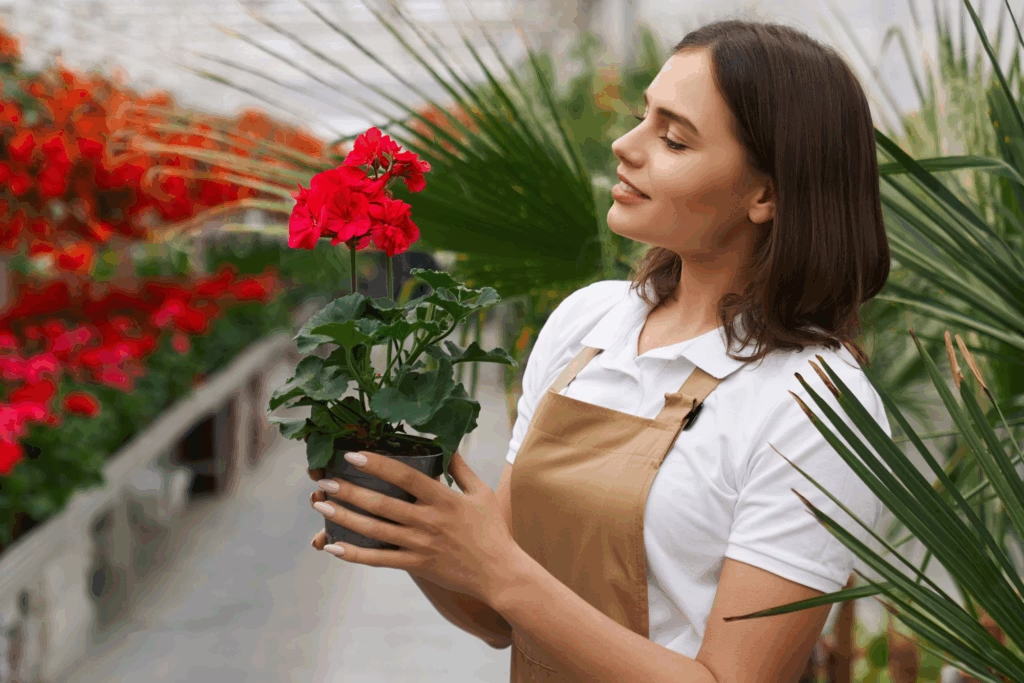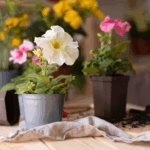Balcony gardening is a wonderful way to bring greenery into urban homes. Whether you have a small apartment balcony or a larger terrace, you can transform it into a mini garden full of herbs, flowers, and even vegetables. With the right setup, you’ll enjoy fresh produce and a refreshing space right outside your door.

In this step-by-step guide, you’ll learn how to plan, set up, and maintain a balcony garden, even if you’re a beginner.
Step 1: Assess Your Balcony Space
Before buying plants, evaluate your balcony:
- Sunlight exposure: Note how many hours of sunlight your balcony receives daily. South-facing balconies usually get maximum light.
- Space and weight: Check the available area and ensure the structure can bear the weight of pots and soil.
- Wind protection: Tall buildings often have strong winds; use screens or railings for protection.
Step 2: Choose the Right Containers
Balcony gardening relies heavily on containers. Pick ones that are:
- Lightweight but durable (plastic, fiberglass, or grow bags).
- Equipped with drainage holes to avoid waterlogging.
- Space-saving—hanging baskets, railing planters, or vertical wall planters.
Read more on container gardening tips here → Agzora Gardening Tools
Step 3: Select Suitable Plants
Pick plants that thrive in small spaces and your local climate. Some great balcony plants include:
- Herbs: Basil, mint, coriander, parsley.
- Vegetables: Tomatoes, chilies, spinach, lettuce.
- Flowers: Marigolds, petunias, geraniums.
- Climbers: Beans or ivy for vertical beauty.
Step 4: Prepare the Best Soil Mix
Plants in containers need nutrient-rich soil. A good mix includes:
- Garden soil for structure.
- Coco peat or peat moss for water retention.
- Compost for natural nutrition.
- Perlite or sand for aeration.
Learn more about organic compost options here → Organic Compost Guide
Step 5: Watering and Fertilizing
Balcony plants dry out faster than ground plants. Follow these tips:
- Watering: Water in the morning or evening; check soil moisture regularly.
- Fertilizing: Add organic liquid fertilizer or compost tea every 2–3 weeks.
- Mulching: Use dried leaves or straw to retain moisture.
Step 6: Optimize Vertical Gardening
When space is limited, think vertical:
- Use wall-mounted shelves for pots.
- Install hanging planters from ceilings or railings.
- Try a vertical garden stand for multiple plants in one spot.
Step 7: Control Pests Organically
Balcony gardens attract pests like aphids and mealybugs. Instead of chemical sprays:
- Spray neem oil solution weekly.
- Introduce natural repellents like garlic spray.
- Keep plants healthy to reduce pest attacks.
Step 8: Add Aesthetic Touches
A balcony garden is also for relaxation. Enhance it with:
- Small garden lights or fairy lights.
- A foldable chair or bench.
- Decorative pebbles, terracotta pots, or bamboo screens.
Step 9: Maintain Your Garden Regularly
- Prune dead leaves and stems.
- Rotate plants to ensure even sunlight.
- Refresh soil annually by adding compost.
Consistency is key to a healthy balcony garden.
Step 10: Enjoy the Harvest
Whether it’s fresh herbs for cooking or colorful blooms to admire, balcony gardening brings joy, reduces stress, and improves air quality in your home.
Final Thoughts
Balcony gardening is not just about growing plants—it’s about creating a green retreat in limited urban spaces. With the right plants, soil, and care, anyone can transform their balcony into a thriving mini garden.
Ready to start your balcony garden? Explore our Gardening Tools & Supplies Collection for everything you need to begin today.





